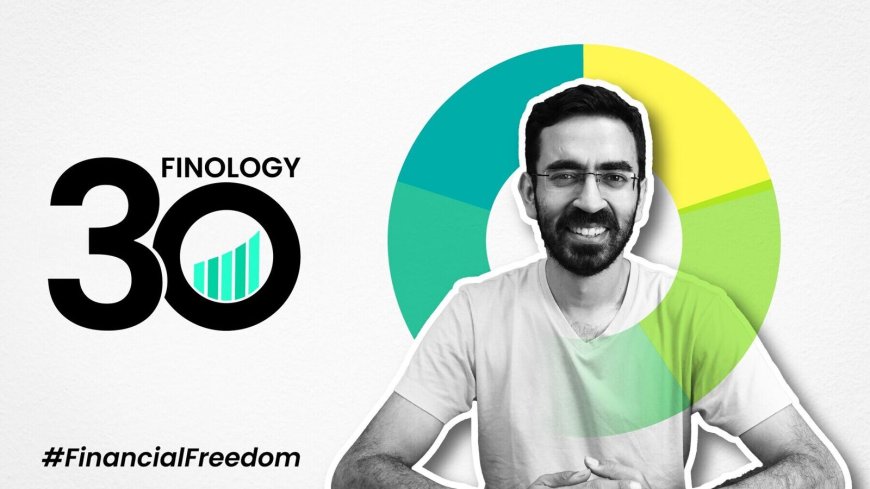Falling into a debt trap? Here's how to get out of it, step by step
Struggling with mounting debt? Discover expert-backed strategies to escape the debt trap, regain control of your finances, and build a secure financial future.

Mounting credit card dues, ballooning EMIs, and constant borrowing can create a spiraling debt cycle—commonly referred to as a debt trap. It’s a scenario where individuals borrow more to service existing loans, falling deeper into a pit of financial distress. But while debt traps are stressful, they are not inescapable.
Financial experts warn that ignoring debt early on can have long-term consequences—reduced credit scores, asset liquidation, and severe lifestyle compromises. However, with methodical planning and disciplined execution, one can successfully navigate out of this financial quagmire.
Understanding the Debt Trap
A debt trap begins when repayment obligations consume a significant chunk of your monthly income. The most common causes include:
-
Excessive credit card spending
-
Multiple personal loans
-
EMIs beyond 40% of monthly income
-
No emergency fund
-
Delayed or missed payments leading to penalties and interest pile-up
“The problem usually starts with a single default and snowballs,” explains Aditi Nair, Senior Economist at FinWell Advisory. “People underestimate compounding interest on credit cards and short-term loans, which can eat into your income quickly.”
Step-by-Step Guide to Escape the Debt Trap
1. Acknowledge and Assess the Debt
The first step is confronting the situation honestly.
Action: List all debts—amounts owed, interest rates, EMIs, and due dates. Prioritize them based on urgency and cost.
Expert Tip: “High-interest debts like credit cards and payday loans should be tackled first,” says Ramesh Iyer, a certified financial planner.
2. Create a Realistic Budget
You must cut unnecessary expenses and divert as much income as possible toward repayments.
Action: Categorize needs vs. wants. Focus on essentials (housing, food, transport) and eliminate or minimize discretionary spending (subscriptions, dining out, shopping).
Tool: Use budgeting apps like YNAB, Walnut, or Excel trackers.
3. Opt for Debt Consolidation
Multiple debts with varying interest rates are harder to manage. Consolidating into a single lower-interest loan simplifies repayment.
Action: Consider personal loans, balance transfer credit cards, or home equity loans for consolidation.
Caution: Avoid borrowing more than required. Stick strictly to repaying the consolidated amount.
4. Increase Income Streams
While cutting costs helps, increasing income accelerates debt repayment.
Action: Explore freelancing, part-time gigs, or selling unused items. Any extra income should go directly toward debt reduction.
“Even ₹5,000 extra per month can shave months off your debt tenure,” says Megha Joshi, a Mumbai-based personal finance coach.
5. Negotiate with Creditors
Don’t hesitate to communicate with banks or NBFCs. Lenders are often willing to restructure payment plans.
Action: Request a reduced interest rate, increased tenure, or one-time settlement (as a last resort).
Note: Loan settlements can affect credit scores but may be necessary if bankruptcy looms.
6. Avoid Taking New Loans
This cannot be overstated: Do not borrow to repay.
Action: Freeze your credit cards, avoid BNPL (Buy Now Pay Later) schemes, and unsubscribe from loan app notifications.
“Taking another loan is like extinguishing fire with gasoline,” warns Iyer.
7. Build an Emergency Fund
Once you stabilize, build a small buffer—at least 1 to 3 months' expenses.
Purpose: To avoid falling back into debt during emergencies like job loss or medical needs.
Tool: Use liquid mutual funds or high-yield savings accounts for easy access.
8. Rebuild Your Financial Health
When debt is under control, the focus should shift to wealth-building and improving your creditworthiness.
Steps:
-
Start SIPs or recurring deposits
-
Review insurance coverage
-
Gradually reintroduce responsible credit usage
Market Context: A Growing Problem
In India, the retail credit market grew at a CAGR of over 16% in the past five years. Credit card outstanding balances have surged post-pandemic, with over ₹2 lakh crore in dues as of March 2025.
With inflationary pressures and lifestyle financing becoming common, middle-income individuals are more susceptible to debt traps.
A recent CRIF High Mark report reveals that nearly 24% of borrowers are servicing more than two loans simultaneously—an alarming indicator.
Investor Outlook: What It Means for Personal Finance Planning
From an investor’s standpoint, high debt levels reduce risk appetite. “Debt affects not just your monthly budget, but also long-term wealth creation,” says Ajay Thakkar, a SEBI-registered advisor. “People often pause SIPs or liquidate mutual funds to service loans, disrupting their compounding journey.”
Thakkar advises individuals to:
-
Maintain a debt-to-income ratio below 30%
-
Avoid high-interest consumer loans
-
Prioritize investments once debts are cleared
Final Thoughts
Escaping a debt trap is a journey, not a sprint. It demands honest assessment, strategic action, and continuous discipline. The good news? Many have done it, and so can you.
By taking control today, you can steer your financial future toward stability, peace of mind, and prosperity. If needed, don’t hesitate to seek help—from financial counselors, debt advisory services, or trustworthy family members.
Because the road to financial freedom always begins with the first brave step.
What's Your Reaction?
 Like
0
Like
0
 Dislike
0
Dislike
0
 Love
0
Love
0
 Funny
0
Funny
0
 Angry
0
Angry
0
 Sad
0
Sad
0
 Wow
0
Wow
0












































































